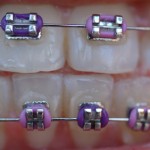
The average length of time for orthodontic treatment is between 18-24 months and a reduction treatment time has been attracting increasing interest in recent years. The aim of this review is to summarize the available evidence regarding clinical performance of surgical and non-surgical approaches for accelerated orthodontic tooth movement.
Methods
Searches were conducted in Pubmed, EMBASE, Google scholar beta, and all the Cochrane Databases for randomised controlled trials (RCTs) and controlled clinical trials (CCTs) reporting on results or treatment parameters related to accelerated orthodontic tooth movement. Studies in English, German, French, and Italian were considered. Any intervention used to accelerate orthodontic tooth movement with the exceptions of pharmacological approaches and distraction osteogenesis techniques were included. Study selection, data abstraction and quality assessment of studies was carried out independently by two reviewers. Quality assessment was performed using the Cochrane Risk of bias tool.
Results
- 18 studies involving at total of 342 patients were included. 8 involved low intensity laser, 7 corticotomy and interseptal bone reduction,pulsed electromagnetic fields and photobiomodulation were each investigated by a single trial.
- There were 12 RCTs; (2 were considered to at low risk of bias, 5 at unclear risk and 5 at high risk) and 6 CCTs (3 at unclear risk and 3 at high risk of bias).
- A narrative synthesis of the studies was undertaken
- Two studies on corticotomy and two on low-intensity laser were mathematically combined using the random effects model.
- Higher canine retraction rate was evident with corticotomy during the first month of therapy (WMD=0.73; 95% CI: 0.28, 1.19, p<0.01) and with low-intensity laser (WMD=0.42mm/month; 95% CI: 0.26, 0.57, p<0.001) in a period longer than 3 months.
- The quality of evidence supporting the interventions is moderate for laser therapy and low for corticotomy intervention.
Conclusions
The authors concluded
There is some evidence that low laser therapy and corticotomy are effective, whereas the evidence is weak for interseptal bone reduction and very weak for photobiomodulation and pulsed electromagnetic fields. Overall, the results should be interpreted with caution given the small number, quality, and heterogeneity of the included studies. Further research is required in this field with additional attention to application protocols, adverse effects, and cost-benefit analysis.
Commentary
While the review has followed a sound methodological approach the majority of the included studies (12) have use split mouth design and as the authors note there may be a possibility of a carry-over effect. With the exception of one study with 90 participants the rest involved 23 or fewer patients. The authors also note that most studies only evaluate part of the treatment rather then the entire treatment duration. Many of the included studies were considered to be poorly reported and few included any information regarding adverse effects.
A protocol for a Cochrane review to assess the effects of surgically accelerated orthodontics on the duration and outcome of orthodontic treatment was registered on this topic and it will be interesting to compare the findings when the Cochrane review is published.

There is some evidence that low laser therapy and corticotomy are effective, whereas the evidence is weak for interseptal bone reduction and very week for photobiomodulation and pulsed electromagnetic fields.
Links
Gkantidis N, Mistakidis I, Kouskoura T, Pandis N. Effectiveness of non-conventional methods for accelerated orthodontic tooth movement: A systematic review and meta-analysis. J Dent. 2014 Jul 27. pii: S0300-5712(14)00218-8. doi: 10.1016/j.jdent.2014.07.013. [Epub ahead of print] PubMed PMID: 25072362
Fleming PS, Pandis N, Johal A, El-Angbawi A, Fedorowicz Z. Adjunctive surgical procedures for accelerating tooth movement in patients undergoing orthodontic treatment (Protocol). Cochrane Database of Systematic Reviews 2013, Issue 6. Art. No.: CD010572. DOI: 10.1002/14651858.CD010572.

Orthodontic treatment; SR finds some evidence that low laser therapy can accelerate tooth movement. http://t.co/m0VLjtd37Z
SR summarises available evidence on surgical and non-surgical approaches for accelerated orthodontic tooth movement. http://t.co/m0VLjtd37Z
Orthodontic treatment; There is low quality evidence demonstrating the effect of corticotomy on tooth movement. http://t.co/m0VLjtd37Z
SR finds some evidence demonstrating that low laser therapy and corticotomy accelerates orthodontic tooth movement http://t.co/m0VLjtd37Z
Don’t miss: Orthodontic treatment; can it be accelerated by surgical and non-surgical approaches? http://t.co/ovkPys16XO
Results should be interpreted with caution given the small number, quality, and heterogeneity of the included studies http://t.co/ovkPys16XO
[…] Dental Elf – 4th Sep 2014 – Orthodontic treatment; can it be accelerated by surgical and non… […]
I had braces, and they had to break the top of my mouth, hotsnely it wasn’t that bad! It’s really just the first week or two that are bad. Its learning to how to eat things differently because you now have these awkward things attached to your teeth and I remember the next day I woke up with my teeth suck to my lips. Just keep reminding yourself of the end result and it will be so worth it : )p.s Hope you’re doing well!